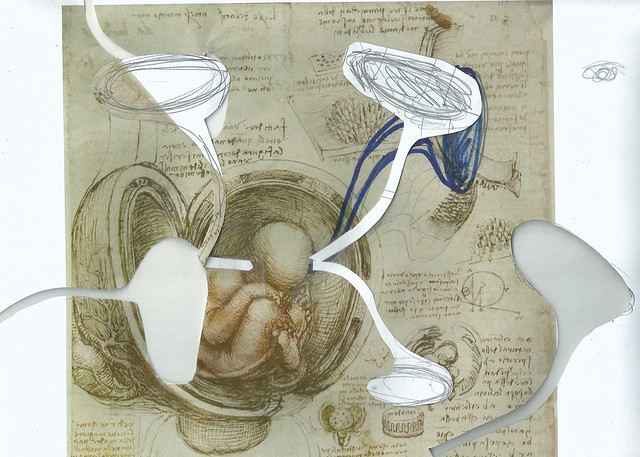PARs in the Womb
May 28, 2013
The Incredible Shrinking Man is interested to know what consequences can be expected for human height if nutrition availability after birth doesn’t match predictions by the fetus on the basis of its prenatal environment. During pre-birth development fetuses prepare for the world outside by using the health of their mother as a nutritional barometer. If the mother isn’t able to provide much nutrients, the unborn child expects harsh conditions after birth. If on the other hand the mother provides an abundance of food the fetus expects an easy availability of resources. Such ‘’predictive adaptive responses’’ (PARs) make for a more seamless transition into the outside world. But in a growing number of cases the baby will not get what it expects. Living conditions might differ drastically because of economic (mis)fortune or development, migration, war etc. In such cases the baby’s physiology is ill-prepared for life outside the womb.
Jane Cleal of the University of Southampton investigated expectational mismatches in sheep and concluded that lambs that are expecting harsh conditions but are born into an abundant nutritional environment have a greater risk of cardio vascular disease. They don’t seem to have the physiological tools to deal with abundance. And although Cleal’s research focusses on CV disease, perhaps we can speculate on the implications for human height. In fast developing countries like China and India, in addition to an epidemic increase in CV disease and obesity, we see an epidemic increase in height. Perhaps a foetus expecting harsh conditions isn’t bothered with bracing itself for an unnatural growth spurt since it expects life after birth to be too tough to grow tall. When confronted with an affluent situation not only does it develop several health problems but the child grows much taller then its predictive responses projected. And that’s not good. On the other hand the fetus expecting easy access to nutrients but born into a world where nutrients are scarce may grow much less tall because its environment doesn’t support easy growth and the child is unable to efficiently use the resources available. But more research is needed. Pre-adapting to the outside environment has served us well in our evolutionary history. And although in today’s rapidly changing world, it might be contributing to the rising levels of heart disease, diabetes and greater height, there’s a chance that the same mechanisms may be appropriated to reverse such consequences. Perhaps tinkering with PARs in the womb will enable us to counter the post-natal pressures to grow tall.